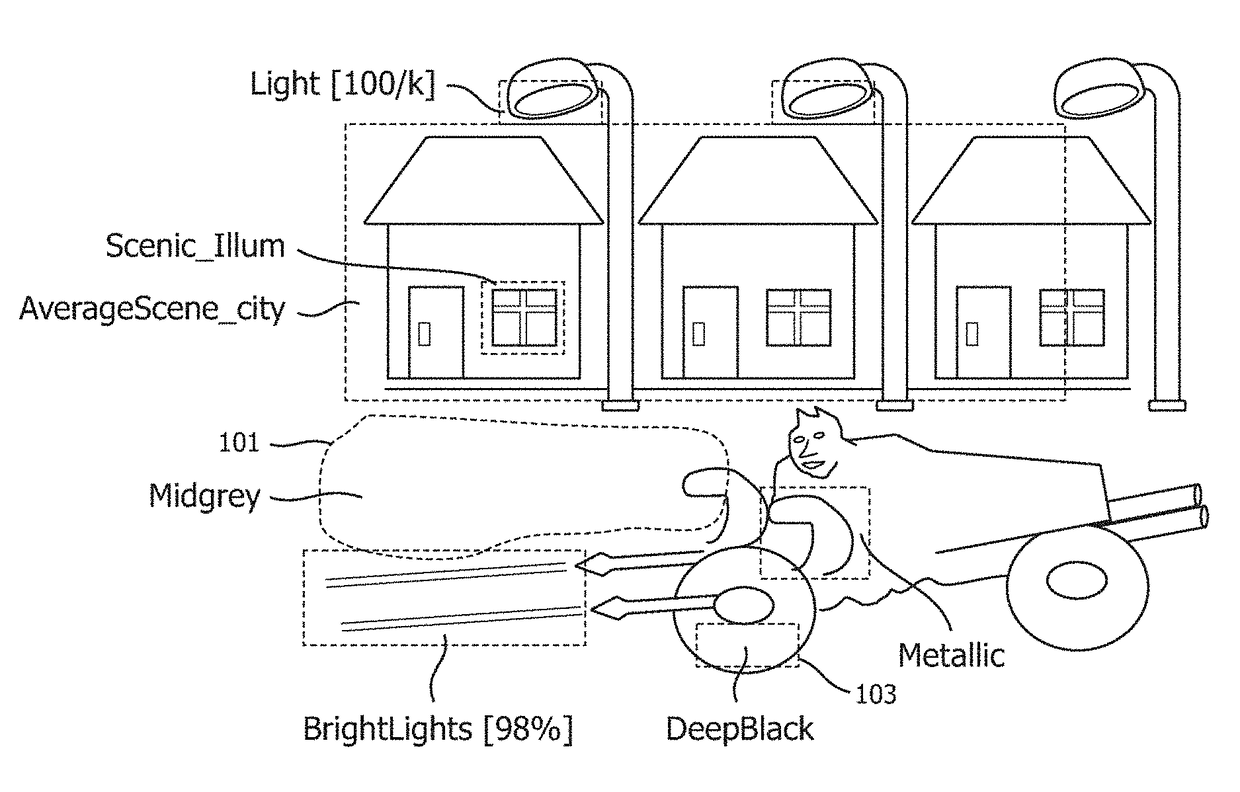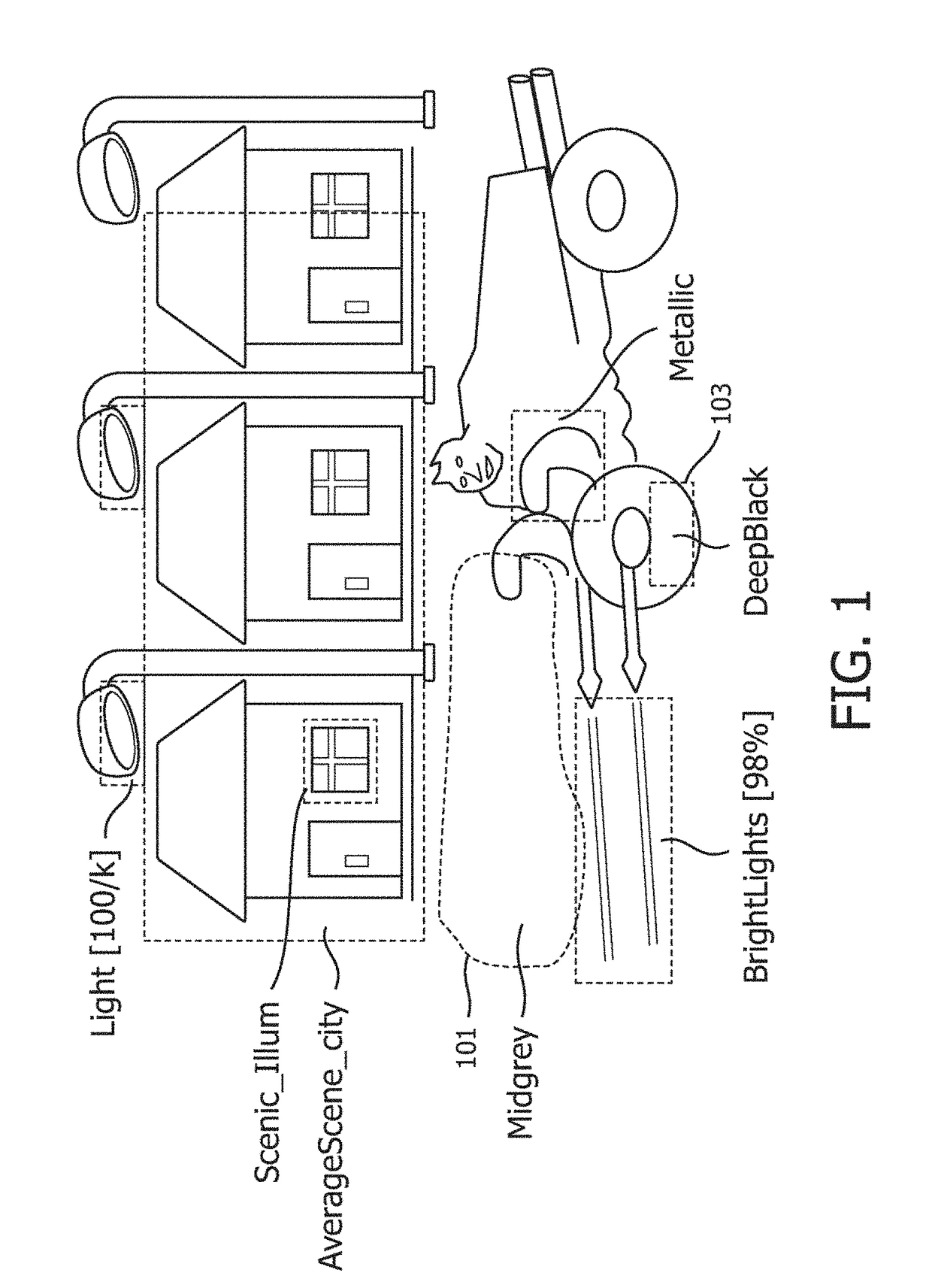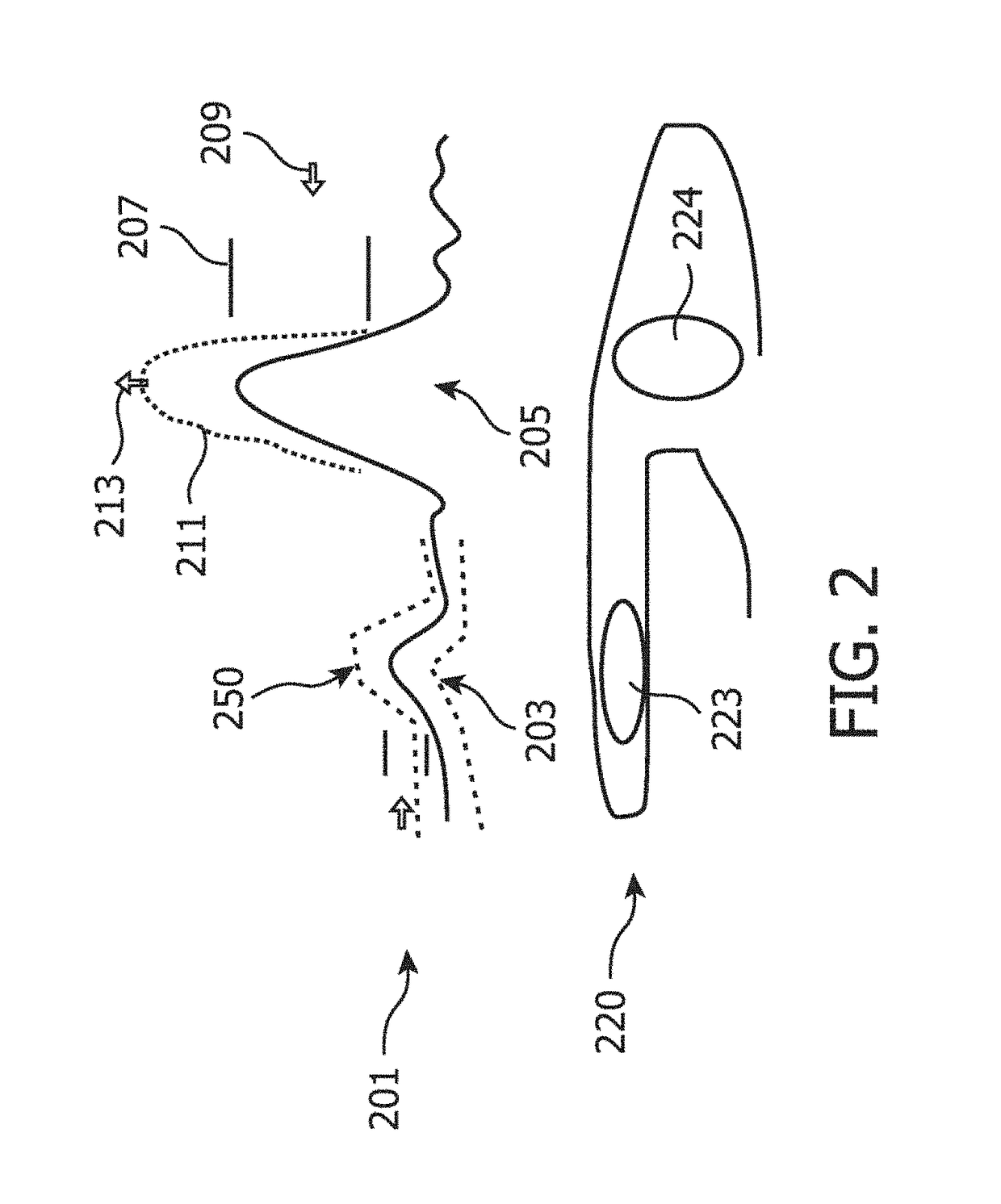Methods and apparatuses for processing or defining luminance/color regimes
a luminance/color regime and luminance technology, applied in the field of methods and apparatuses for processing or defining luminance/color regimes, can solve the problems of affecting the quality the change of the actual display in the viewer's living room, and the lcd of the actual display, so as to achieve good quality and high dynamic range
- Summary
- Abstract
- Description
- Claims
- Application Information
AI Technical Summary
Benefits of technology
Problems solved by technology
Method used
Image
Examples
Embodiment Construction
[0053]With reference first to FIG. 8, there is shown a couple of illustrative examples of the many possible HDR scenes a HDR system of the future (e.g., connected to a 1000 nit PB rendering display) may need to be able to correctly handle, i.e., by rendering the appropriate luminances for all objects / pixels in the image. E.g., ImSCN1 is a sunny outdoors image from a western movie, whereas ImSCN2 is a nighttime image. What makes HDR image rendering different from how it always was in the LDR era which ended only a couple of years ago, is that the LDR had such a limited dynamic range (about PB=100 nit, and black level +−0.1 to 1 nit), that mostly only the reflectivities of the objects could be shown (which would fall between 90% for good white and 1% for good black). So one had to show the objects independent of their illumination, and couldn't at the same time faithfully show all the sometimes highly contrasty illuminations of the scene that could happen. In practice that meant that ...
PUM
| Property | Measurement | Unit |
|---|---|---|
| peak brightness | aaaaa | aaaaa |
| luminance | aaaaa | aaaaa |
| luminance | aaaaa | aaaaa |
Abstract
Description
Claims
Application Information
 Login to View More
Login to View More - R&D
- Intellectual Property
- Life Sciences
- Materials
- Tech Scout
- Unparalleled Data Quality
- Higher Quality Content
- 60% Fewer Hallucinations
Browse by: Latest US Patents, China's latest patents, Technical Efficacy Thesaurus, Application Domain, Technology Topic, Popular Technical Reports.
© 2025 PatSnap. All rights reserved.Legal|Privacy policy|Modern Slavery Act Transparency Statement|Sitemap|About US| Contact US: help@patsnap.com



